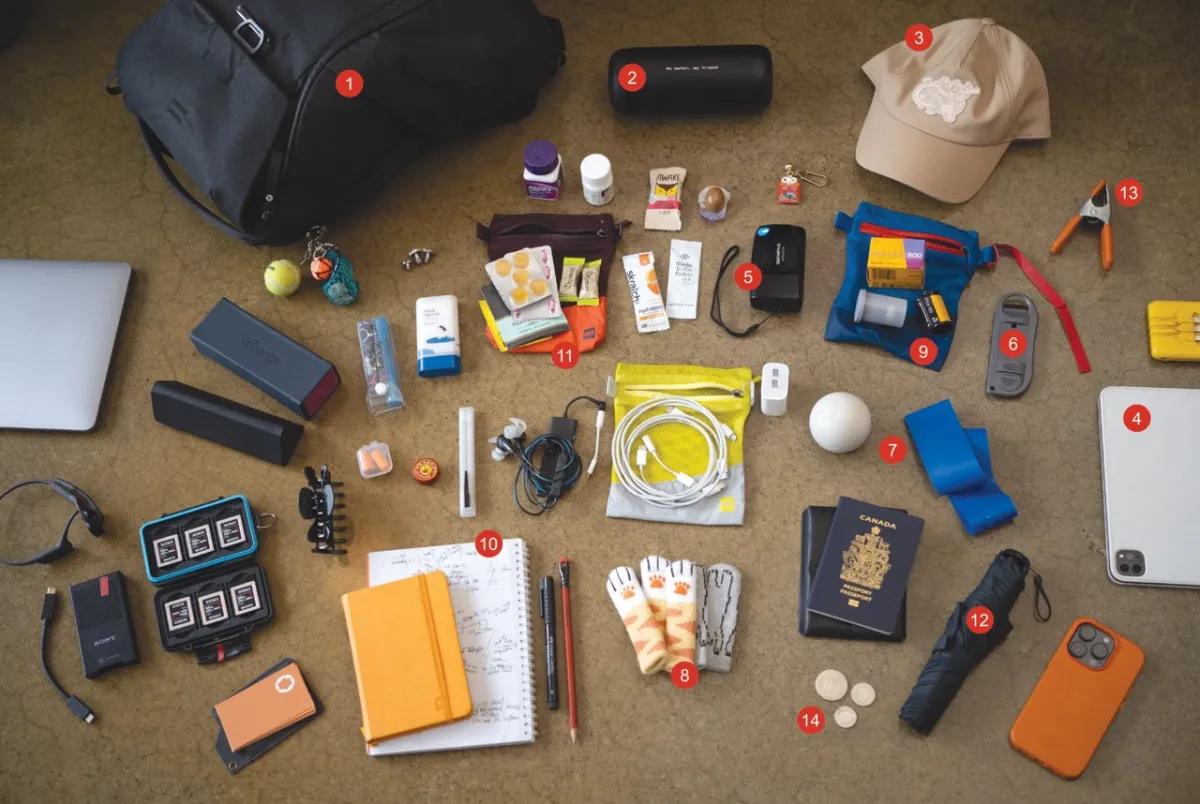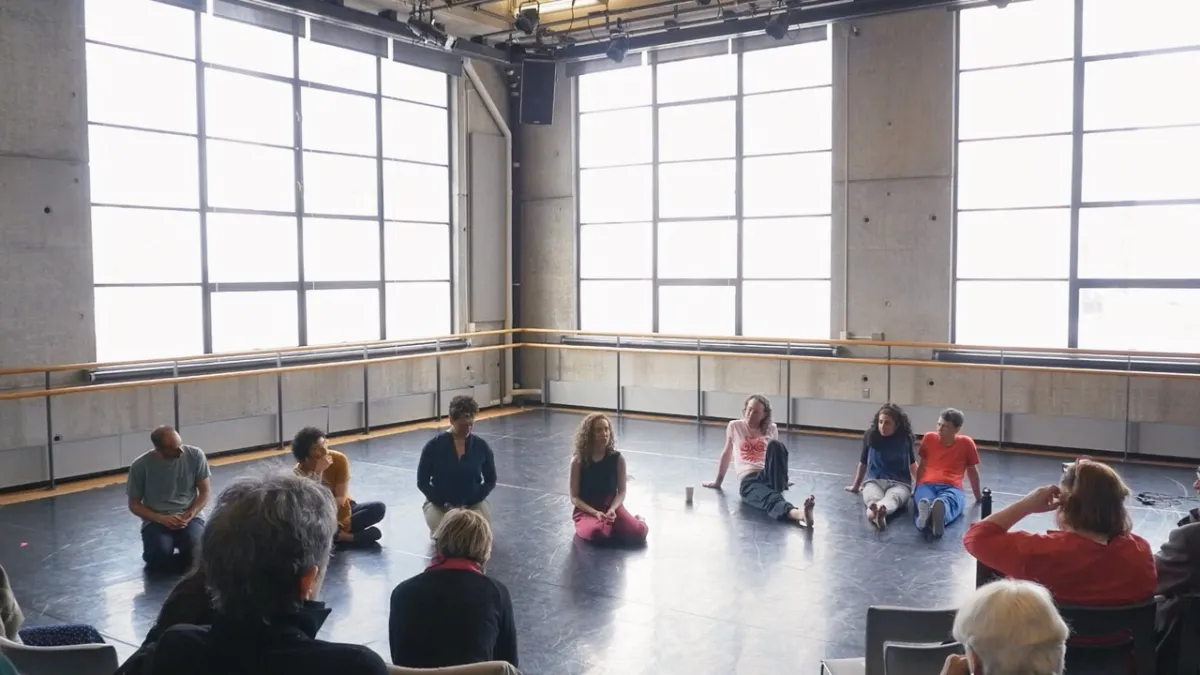

Courtesy of the writer
What’s in My Bag spotlights the setups that help create the stories of our times. This regular column offers a peek into the technical and philosophical underpinnings of some of the most important crew on documentaries—camera and sound people and editors.
As a cinematographer, I’ve always seen the process of filmmaking as a process of learning, particularly learning about the self. You’re constantly on board new experiences and challenging situations, and you notice how it affects you over time. As a result, you figure out your personal needs—the things that help you do your best on the day of shooting. So I’ve gradually discovered what I feel secure having on me, the importance of building from each experience, and that the experiences outside of filming are also worth documenting.
Besides my camera-related gear that serves as the bare minimum on every shoot (2 Pelicans, 1 tripod carrier, and a suitcase with lighting and grip and personal effects), I always keep my knapsack close to me. I stuff so many little things in this bag that I need to divide them up into pouches. This particular bag is great for its built-in sections and easy access from all angles. I fit both laptop and iPad in it, and anyone who lifts it says, “Good Lord, what’s in here!?” It’s designed for still camera accessories, but I use the pack’s dividers to section off my meds, glasses, and items I need quick access to at the airport or wherever. Gravol tablets and ginger are there for motion sickness whenever I have to look through my viewfinder while shooting from a moving vehicle or boat (as in the case of The Last of the Sea Women [2024], Twice Colonized [2023], and This River [2016]—I’ve shot on lots of boats!), bug repellent wipes, and antihistamines for encounters with cats that I could only hope for.
I’ve been writing in Whitelines notebooks since I started working, and always have one in hand for lists, lighting diagrams, and recording the director’s process of how they are seeing the film. While I’m searching for the right visual approach, somewhere in the accumulated conversations is the key that unlocks the central concept that I can use to inform my camera work. These notes also hold what’s working, what’s not, and what I’ve learned, both positive and negative. I find that when I’m switching gears between the different projects I work on at the same time, sometimes over several years, I can lose track of the key learning points. Taking notes as I go reminds me of where we left off. Even if I never read the technical specs or cryptic thematic revelations like “consent is the porn!” (Suzanne Hillinger’s Money Shot: The Pornhub Story [2023]) again, having written it down makes a deeper imprint on my memory than if I hadn’t.
A shoot is often so jam-packed with visiting different locations that I tend to forget the minute details or even entire experiences themselves (especially if a lot of them don’t make it into the film). In addition to my notes, I snap pics on my phone that are just for me, that reference where we were, our crew, and the camera frames we settled on. They are all important as future references. It’s also part of my learning the value of the experiences themselves.
Over the last few years, I’ve adopted another ritual of bringing a couple of rolls of film and a point-and-shoot camera my friend Sarah gave me after it was gifted to her by her brother in the ’90s. I use it to snap some pics during those special moments outside of filming, like having lunch in random places or BTS shots of our setting up. I like capturing these moments on film because it creates a different memory to complement the primarily digital filmmaking process I’m often engaged in. I feel that this creates a more meaningful imprint of the moment, one that I might forget if I hadn’t captured it on film. Also, I can print the photos and hand them out to the people who are in them at the end of the year as a tangible memento of our fun times.
What has become meaningful to me about my experiences has shifted, or at least, become clearer over time. I still value the opportunity to access unique places around the world, but it’s the people I’ve met that are the real gift of doing what I do. Forging the relationships in front of and behind the lens and appreciating the quality time we inevitably spend with strangers and filmmaking friends is the takeaway I most cherish.
Image Annotations:
- Peak Design Everyday Backpack
- Thermal mug—with Bruce Lee’s famous quote about embodying strength through adaptability and fluidity
- Tennis hero hat—as a reminder of the sports mentality in tough situations: to leave your mistakes behind you
- iPad Pro—for Artemis, Scriptation, Sun Seeker, Sun Seeker, Shot Designer, Frame.io for remote grading, etc.
- Olympus Stylus Epic
- 35mm film puller
- Physio/massage items
- Chair socks for light stands
- Film with X-ray reminder tag
- Whitelines notebook
- Motion meds
- Fulton 86g umbrella
- Pony clamp for seatbelts and hotel curtains
- Coins for baggage carts
This piece was first published in Documentary’s Spring 2025 issue, with the following subheading: An award-winning cinematographer seeks meaningfulness in her work.
Renowned for her versatility behind the camera, Iris Ng combines patience, creativity, and technical expertise to transform a director’s vision into compelling on-screen storytelling. Iris has collaborated with award-winning directors on documentaries that have garnered international acclaim and resonate deeply with audiences worldwide. Her diverse body of work also includes broadcast scripted series, shorts, and artist-driven films. Among Iris’s many notable credits are Stories We Tell (2012, dir. Sarah Polley), Twice Colonized (2023, dir. Lin Alluna), Strays (2021 – 2022, dir. Pat Mills) and Shirkers (2018, dir. Sandi Tan). Her work has been showcased at prestigious international festivals and exhibitions, yet her true goal remains capturing the authenticity of a moment, listening deeply to her subjects, and using cinematography as a tool for allyship.




